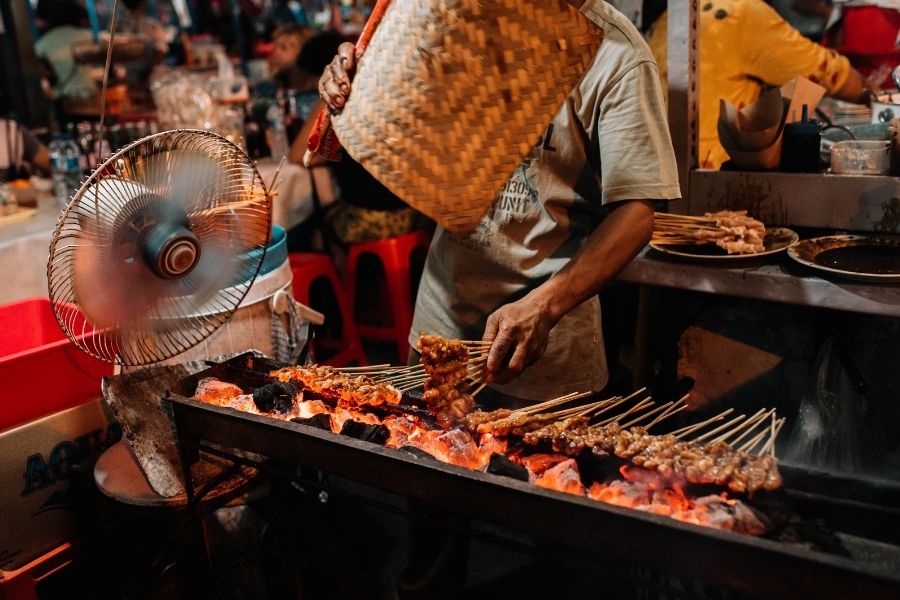Bali Belly: Meaning, Symptoms and Treatment Guide
Life in the enchanting island of Bali is truly a dream for many travelers. However, a not-so-pleasant experience that many newcomers and tourists encounter is the infamous “Bali Belly”.
Let’s delve into what this phenomenon is, its origins, symptoms, causes, and treatments of this cute sounding but awful condition
Origins of the Term “Bali Belly”
“Bali Belly” is a colloquial term often used by expatriates and tourists to describe a bout of traveler’s diarrhea that they experience while staying in Bali. While the term specifically mentions Bali, traveler’s diarrhea can occur in many parts of the world. The name has likely gained traction because Bali is a popular tourist destination and many visitors, unaccustomed to the local microorganisms and food handling practices, find themselves grappling with this unpleasant condition.

Bali Belly Meaning
“Bali Belly” refers to a sudden onset of diarrhea, which is often accompanied by nausea, vomiting, stomach cramps, and sometimes fever. Essentially, it’s the body’s way of reacting to foreign bacteria or parasites that have entered the digestive system, typically through contaminated food or water.
While the term “Bali Belly” primarily refers to traveler’s diarrhea experienced in Bali, there’s an amusing misconception surrounding its meaning. Some newcomers and tourists, especially those enchanted by the island’s culinary delights, mistakenly refer to “Bali Belly” as the phenomenon of gaining a few extra pounds during their stay. Bali, with its array of mouthwatering dishes, can indeed lead travelers to indulge a bit more than usual.
From flavorful rendangs to creamy coconut-based desserts, the island’s gastronomic offerings can be irresistibly tempting. This light-hearted confusion underscores not just the potential pitfalls of traveling (like occasional gastrointestinal upsets), but also the joys and pleasures of immersing oneself in a new culture and its delicious cuisine.
Bali Belly Symptoms
The symptoms of Bali Belly can range from mild to severe, and they usually manifest within a day or two after consuming contaminated food or water. Common symptoms include:
• Diarrhea (often watery and frequent)
• Stomach cramps or pain
• Nausea and/or vomiting
• Loss of appetite
• General malaise or feeling unwell
• Bloating
• Urgency to use the toilet
• Fever or mild feverish feeling

Causes of Bali Belly
Bali Belly is usually caused by consuming food or water that’s been contaminated with bacteria, viruses, or parasites. Common culprits include:
• E. coli – often from undercooked meat.
• Salmonella – from raw or undercooked eggs, poultry, and meat.
• Shigella – from contaminated water or uncooked food.
• Campylobacter – usually from raw or undercooked poultry.
• Giardia or Cryptosporidium – parasites found in contaminated water.
• Viruses like norovirus or rotavirus.
Bali Belly Treatment
In many cases, Bali Belly resolves on its own within a few days. However, some measures can help alleviate the symptoms and speed up recovery:
• Stay Hydrated: Due to diarrhea and vomiting, there’s a risk of dehydration. Drink plenty of bottled water, and consider oral rehydration solutions to replace lost electrolytes.
• Dietary Changes: Stick to bland foods like toast, rice, or bananas and avoid spicy, oily, or dairy-based products.
• Medication: Over-the-counter anti-diarrheal medications like loperamide can help reduce the frequency of diarrhea, but they should not be overused.
• Antibiotics: For severe cases, or if the symptoms persist beyond a few days, a doctor might prescribe antibiotics.
• Rest: Give your body the time it needs to recover. Rest and avoid strenuous activities.
Preventing Bali Belly
While there’s no guaranteed way to avoid Bali Belly, taking the following precautions can reduce the risk:
• Drink only bottled water and avoid ice in drinks.
• Eat freshly cooked food and avoid street vendors.
• Wash your hands regularly with soap or use hand sanitizers.
• Avoid raw or undercooked meats, seafood, and eggs.
Bali Belly vs. Delhi Belly
Both “Bali Belly” and “Delhi Belly” are colloquialisms that describe a form of traveler’s diarrhea specific to their respective regions. “Bali Belly” emerged as a term due to the large influx of tourists visiting Bali, who often grapple with gastrointestinal disturbances caused by unfamiliar local microorganisms and food handling practices.
Conversely, “Delhi Belly” refers to the same condition but when experienced in India, particularly its bustling capital, Delhi, with its dynamic streets and myriad of food stalls where many tourists often find themselves unprepared for the diverse range of local cuisines.
Culturally and gastronomically, these two regions offer distinct experiences. Bali presents a mix of traditional Balinese cuisine blended with international influences, encompassing everything from satay to pizza. However, raw foods, unfiltered water, and iced drinks often pose challenges for newcomers. In contrast, Delhi serves up the rich and aromatic flavors of Indian cuisine, celebrated for its spices and varied dishes.

While the term “Bali Belly” might sound light-hearted, the experience can be quite uncomfortable. However, by taking some preventive measures and knowing what to do if it strikes, you can ensure your time in Bali remains memorable for all the right reasons.






